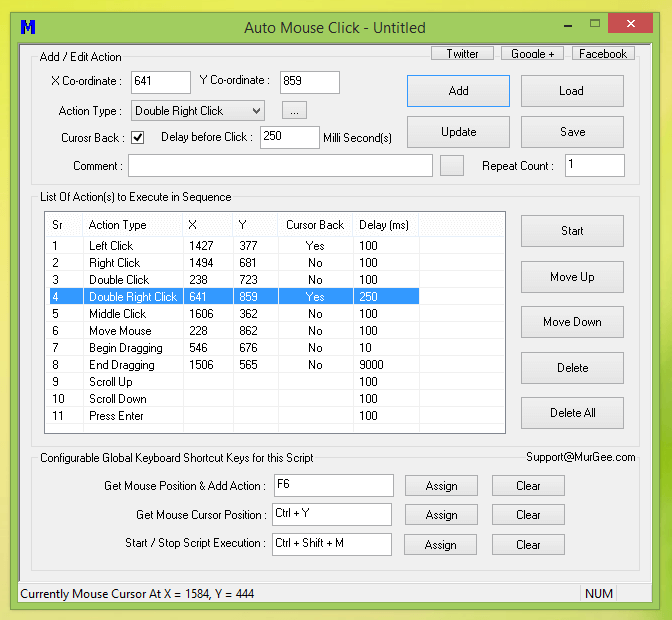
#Auto mouse clicker 2.10 how to
Read the README file in the no-ip-2.1.9 folder for instructions on how to make the client run at startup. Simply issue this final command to launch the client in the background: Now that the client is installed and configured, you just need to launch it. If you’re just setting up a new service, then there is no need to worry however if you have previous setups don`t say yes to update all host’s questions. Be careful one of the questions is “Do you wish to update ALL hosts.” If answered incorrectly, this could affect hostnames in your account that are pointing at other locations. You will then be prompted for your No-IP username and password, as well as the hostnames you wish to update for the port forwarding setup. (dash capital C in this command will create the default config file) You will be able to install ’s DUC on any Linux-based operating system in just a few minutes with Terminal and the following commands.Īs root again (or with sudo) issue the below command: But before that make sure you prepare a NOIP account as shown below To use DUC in any Linux distro, you will need to download and install the NOIP client. So to set up this dynamic update client in Linux you need to perform the following steps


Now instead of mapping the hack to your public IP, you map it with the hostname you select. This is done by a client software called DUC or Dynamic Update Client. NOIP is a dynamic DNS service that constantly maps your IP public address to the target device with a free hostname. What if you could connect with something that doesn’t change no matter how many times the IP address changes? That’s where NOIP comes into the picture Once the modem restarts, 99 % of the time you will be getting a new public IP address which means any hack you had previously done is no longer valid since your IP has changed. Dynamic IP addresses are a real headache for hackers and network engineers.


 0 kommentar(er)
0 kommentar(er)
